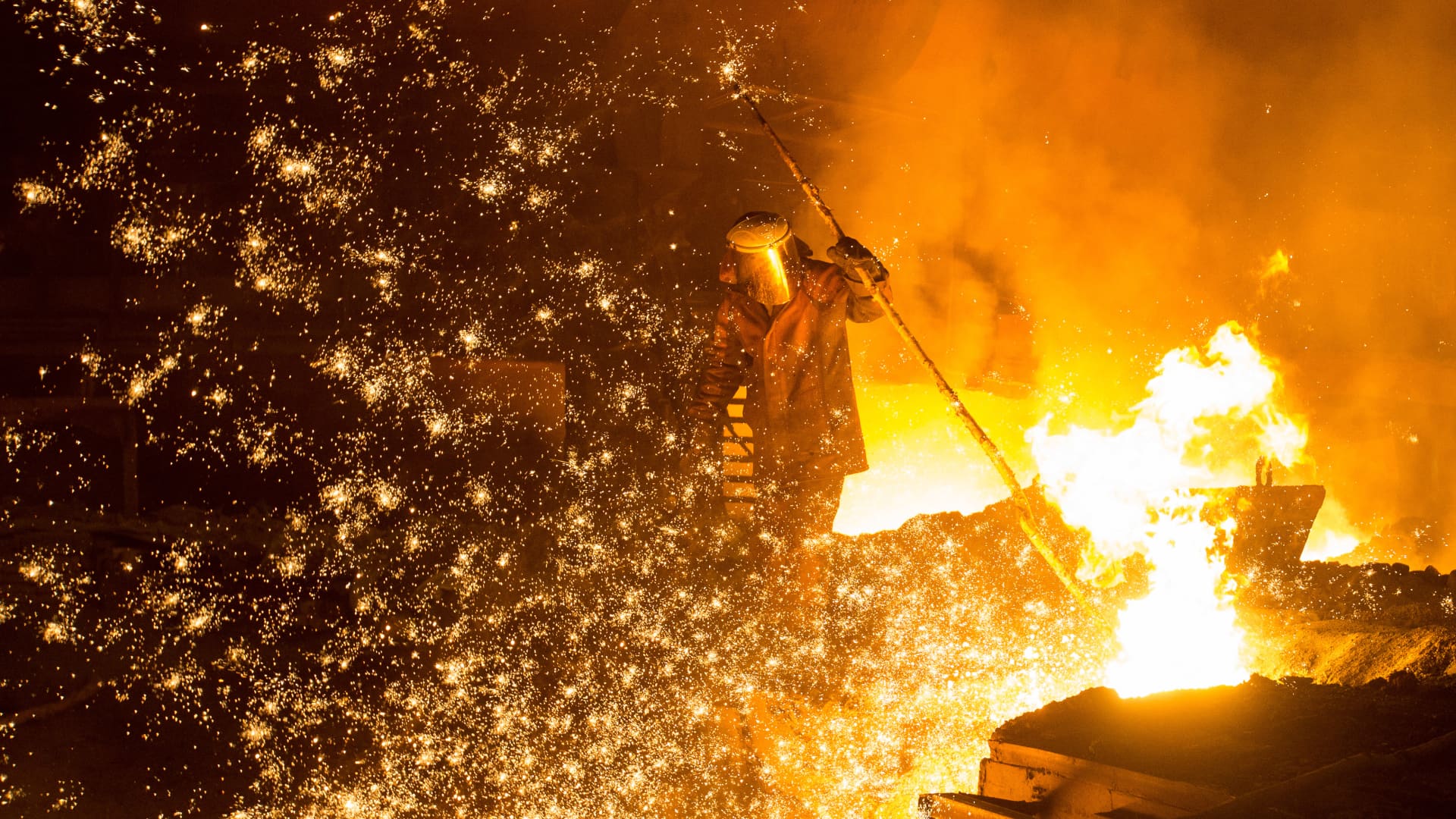Russia is expected to grow faster than all advanced economies this year
Russia is expected to grow faster than all advanced economies this year CNBC


Russia’s Economy Expected to Outpace Advanced Economies, IMF Says

Russia’s economy is expected to grow faster than all advanced economies this year, according to the International Monetary Fund.
Russia is expected to grow 3.2% in 2024, the IMF said in its latest World Economic Outlook published Tuesday, exceeding the forecast growth rates for the U.S. (2.7%), the U.K. (0.5%), Germany (0.2%) and France (0.7%).
The prediction will be galling for Western nations which have sought to economically isolate and punish Russia for its 2022 invasion of Ukraine.
Russia says Western sanctions on its critical industries have made it more self-sufficient and that private consumption and domestic investment remain resilient. Meanwhile, continuing oil and commodity exports to the likes of India and China, as well as alleged sanctions evasion and high oil prices, have allowed it to maintain robust oil export revenues.
Russia’s military-industrial complex has also expanded significantly during the war as defense spending and production have rocketed. In short, Russia has adapted to a “new normal” as its economy has been put on a war footing.
The IMF predicted that Russia’s economic growth would moderate in 2025, however, declining to 1.8% “as the effects of high investment and robust private consumption, supported by wage growth in a tight labor market, fade.”
The Washington-based IMF includes the U.S., U.K., the euro area’s largest economies, Canada and Japan as advanced economies. Russia, China and India remain in its “emerging and developing” Europe and Asia categories, respectively.
The head of the IMF told CNBC in February that the Russian economy was still facing significant headwinds despite the Fund’s rosy forecasts for the country of roughly 145 million people.
“What it [the growth data] tells us is that this is a war economy in which the state — which let’s remember, had a very sizeable buffer, built over many years of fiscal discipline — is investing in this war economy,” IMF Managing Director Kristalina Georgieva told CNBC’s Dan Murphy at the World Governments Summit in Dubai in February.
“If you look at Russia, today, production goes up, [for the] military, [and] consumption goes down. And that is pretty much what the Soviet Union used to look like. High level of production, low level of consumption.”
Read more
SDGs, Targets, and Indicators Analysis
1. Which SDGs are addressed or connected to the issues highlighted in the article?
- SDG 8: Decent Work and Economic Growth
- SDG 9: Industry, Innovation, and Infrastructure
- SDG 10: Reduced Inequalities
The article discusses Russia’s economic growth, its military-industrial complex, and challenges related to skilled workers and technology access. These issues are connected to the goals of promoting economic growth, innovation, and reducing inequalities.
2. What specific targets under those SDGs can be identified based on the article’s content?
- SDG 8.1: Sustain per capita economic growth in accordance with national circumstances and, in particular, at least 7% GDP growth per annum in the least developed countries.
- SDG 9.2: Promote inclusive and sustainable industrialization and, by 2030, significantly raise industry’s share of employment and gross domestic product.
- SDG 10.4: Adopt policies, especially fiscal, wage, and social protection policies, and progressively achieve greater equality.
The article mentions Russia’s expected economic growth rate of 3.2% in 2024, which aligns with the target of sustaining per capita economic growth. The expansion of Russia’s military-industrial complex also reflects efforts towards inclusive and sustainable industrialization. The article also highlights the impact of sanctions on skilled workers and reduced access to technology, indicating challenges related to achieving greater equality.
3. Are there any indicators mentioned or implied in the article that can be used to measure progress towards the identified targets?
- GDP growth rate
- Industry’s share of employment and GDP
- Skilled worker shortages
- Access to technology
The article mentions Russia’s expected GDP growth rate of 3.2% in 2024, which can be used as an indicator for measuring progress towards sustaining economic growth. The expansion of the military-industrial complex indicates an increase in industry’s share of employment and GDP. The challenges related to skilled worker shortages and reduced access to technology can be indicators of the progress towards achieving greater equality.
Table: SDGs, Targets, and Indicators
| SDGs | Targets | Indicators |
|---|---|---|
| SDG 8: Decent Work and Economic Growth | 8.1: Sustain per capita economic growth in accordance with national circumstances and, in particular, at least 7% GDP growth per annum in the least developed countries. | GDP growth rate |
| SDG 9: Industry, Innovation, and Infrastructure | 9.2: Promote inclusive and sustainable industrialization and, by 2030, significantly raise industry’s share of employment and gross domestic product. | Industry’s share of employment and GDP |
| SDG 10: Reduced Inequalities | 10.4: Adopt policies, especially fiscal, wage, and social protection policies, and progressively achieve greater equality. | Skilled worker shortages, access to technology |
Behold! This splendid article springs forth from the wellspring of knowledge, shaped by a wondrous proprietary AI technology that delved into a vast ocean of data, illuminating the path towards the Sustainable Development Goals. Remember that all rights are reserved by SDG Investors LLC, empowering us to champion progress together.
Source: cnbc.com

Join us, as fellow seekers of change, on a transformative journey at https://sdgtalks.ai/welcome, where you can become a member and actively contribute to shaping a brighter future.







